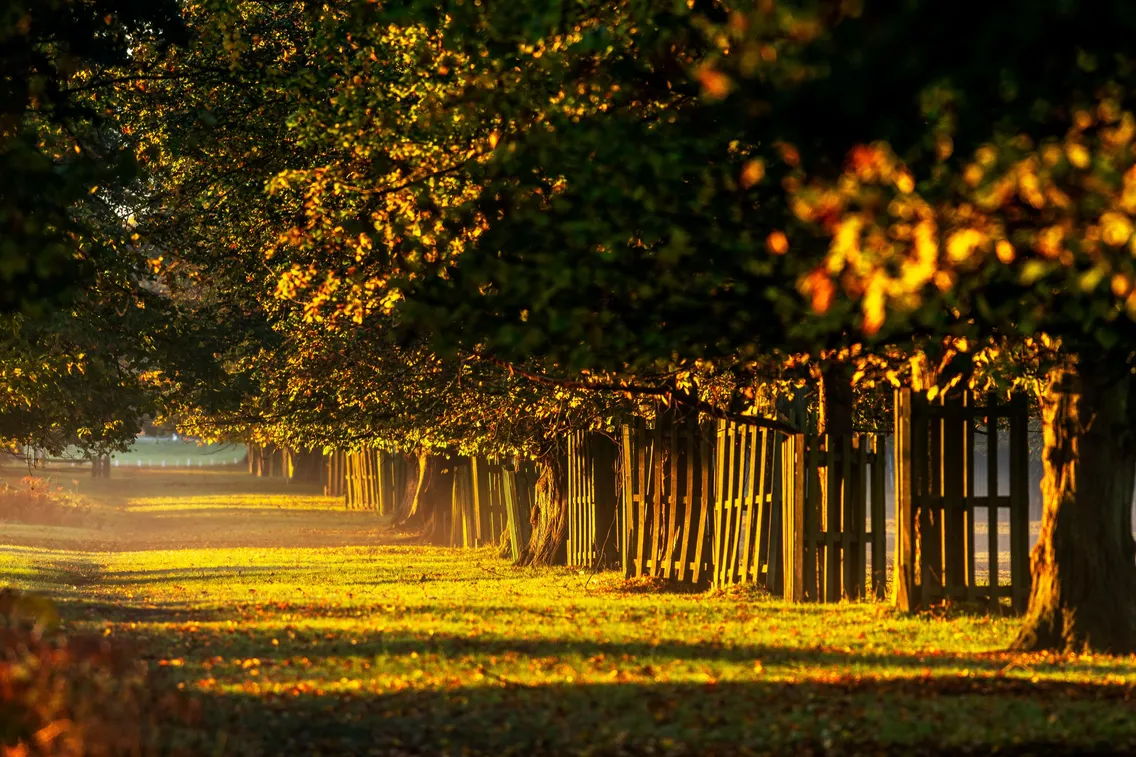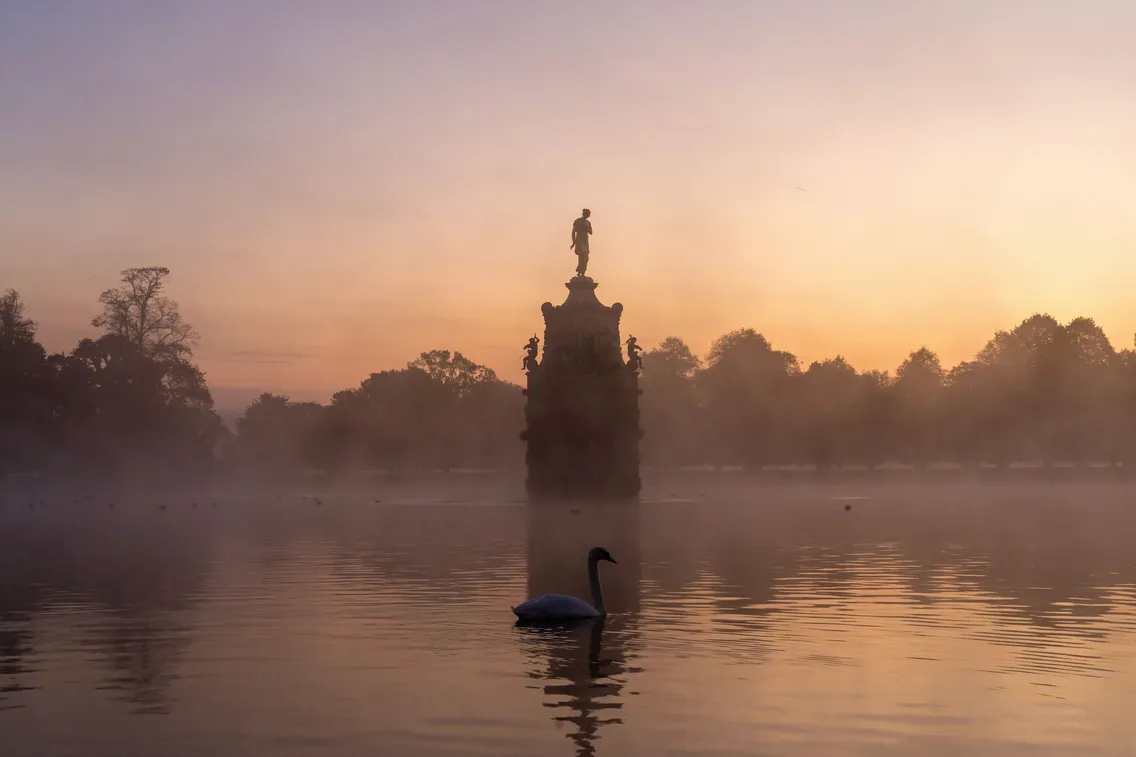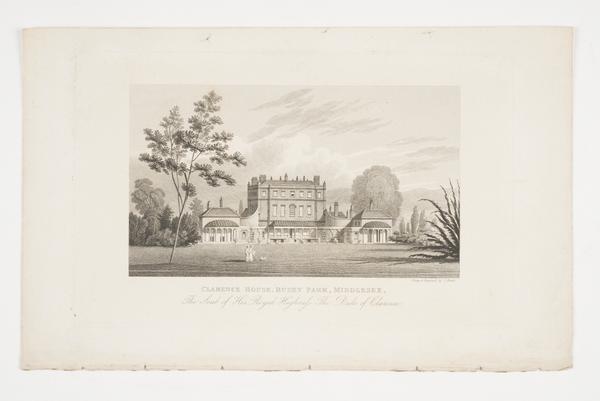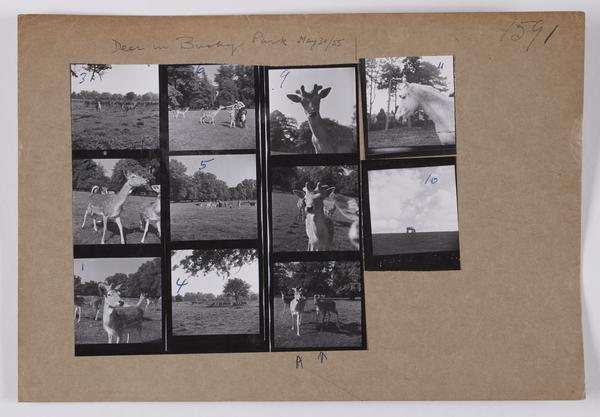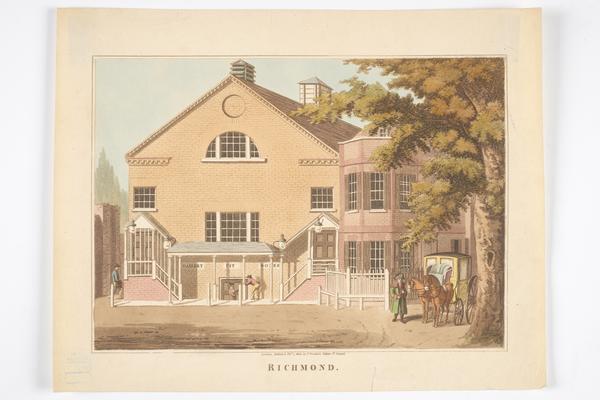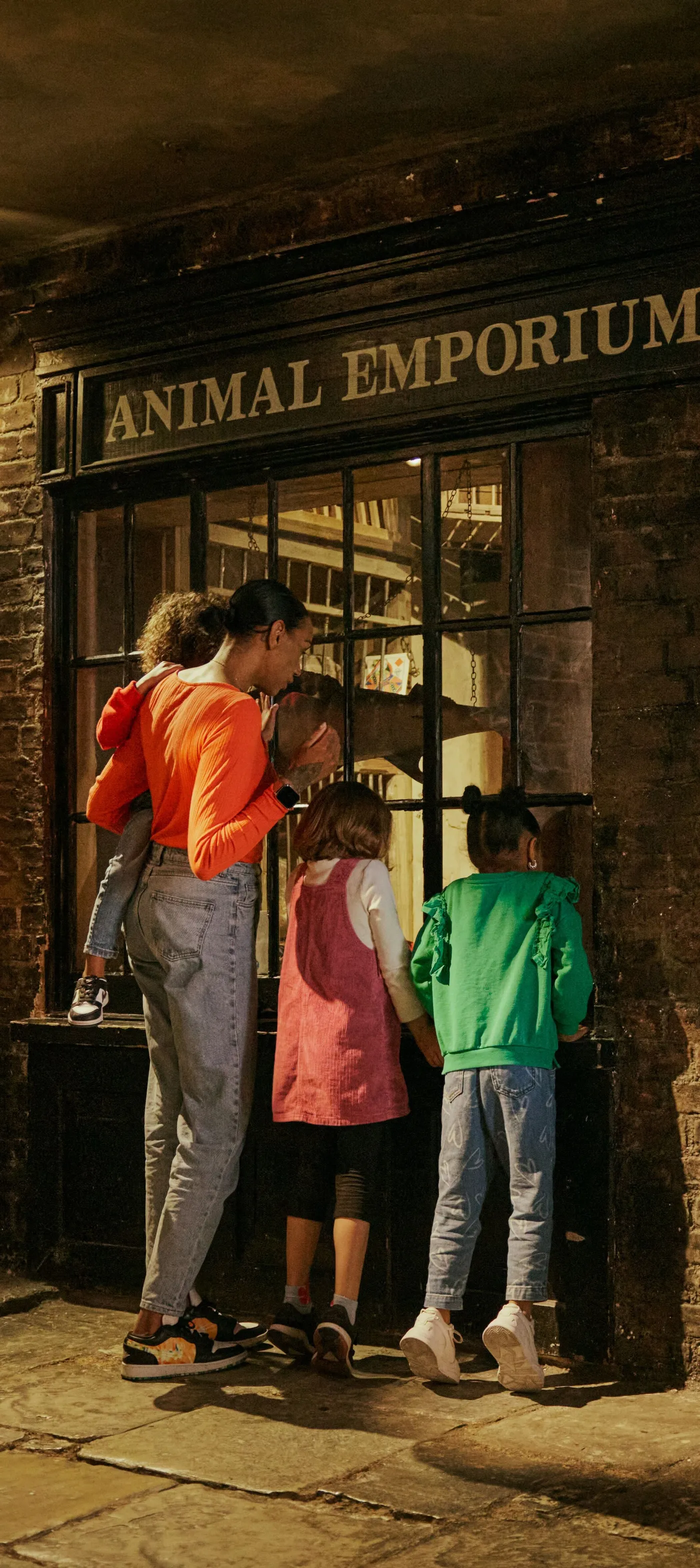Bushy Park: London's second-largest royal park
Once Henry VIII's hunting grounds, Bushy Park is home to ancient herds of deer, a rare and protected grassland, a Christopher Wren creation and has a fascinating wartime connection.
Richmond
Since 1529
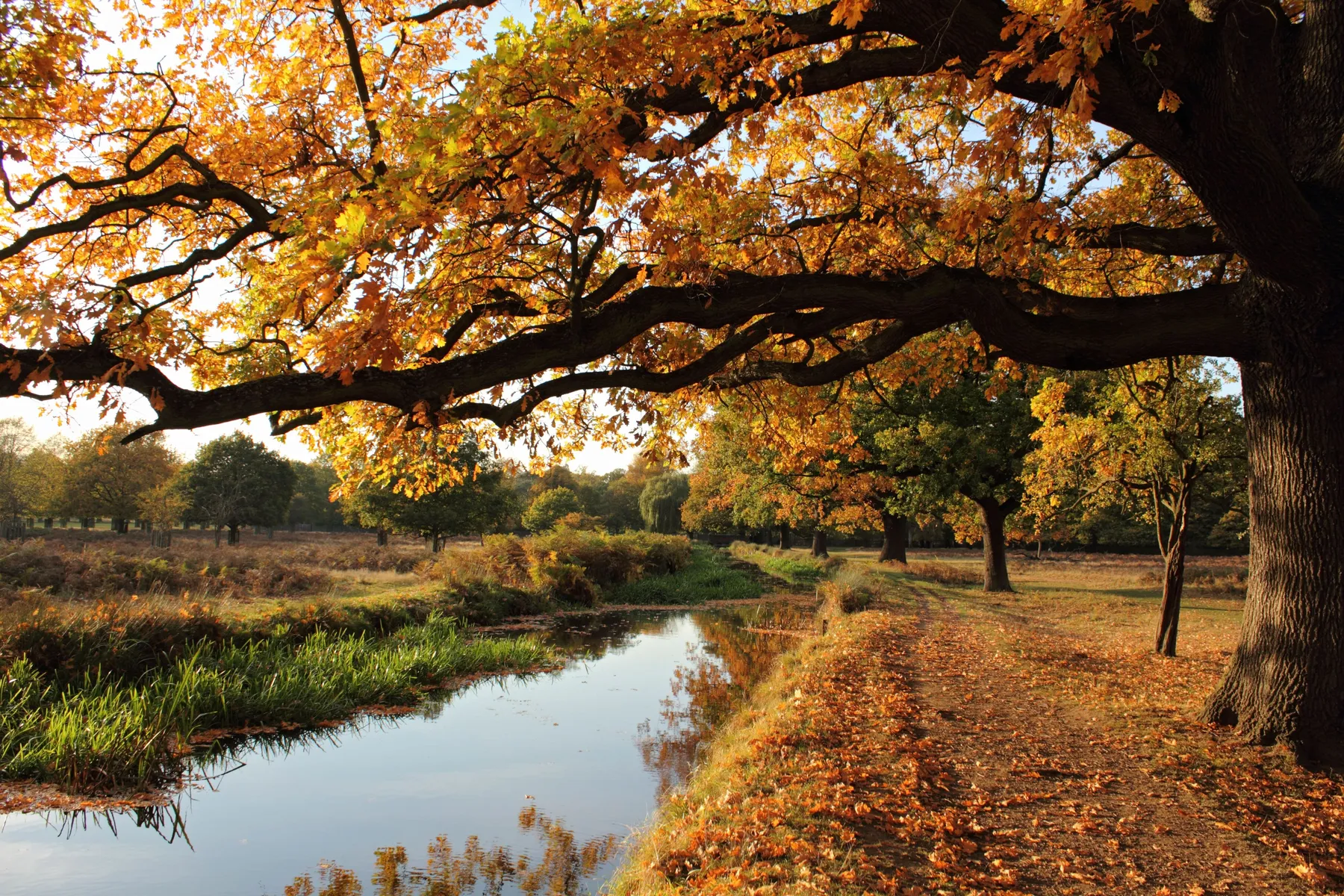
Deer hunts, historic trees and a secret military base
Richmond Park may wear the crown of London’s biggest royal park. But just nearby, nestled in the curve of the River Thames in south-west London, Bushy Park takes second place.
Bushy Park has witnessed some fascinating historical events. It began life as a deer-hunting playground for King Henry VIII, until successive royals shaped it into a park fit for kings and queens. United States military forces set up camp in the park during the Second World War (1939–1945).
Today, it’s known as the home of parkrun, a popular 5km run now hosted across the country. But there's more to this royal park than meets the eye. Its acid grassland is a rare and important natural habitat. And it's an important site for biodiversity, with its yellow meadow ant responsible for the mounds around the parkland.
Before it was a Royal Park
The site of Bushy Park has been settled for at least 4,000 years. A Bronze Age barrow or burial mound was excavated near Sandy Lane. Remains of medieval settlements and farmlands have also been found in the park.
The oldest recorded tree in Bushy Park is a sweet chestnut tree planted around 1370.
Henry VIII's royal hunting ground
Henry VIII was given the nearby Hampton Court Palace by his advisor, Cardinal Thomas Wolsey, in 1529. A keen sportsman, he immediately set about transforming Bushy Park into his personal hunting ground, much like he did with many of the other royal parks. Henry ordered the park to be enclosed with wooden palings and stocked with deer.
Remarkably, some of the ancient oak trees that dot the park’s landscape date back to this Tudor period, silent witnesses to over 500 years of history.
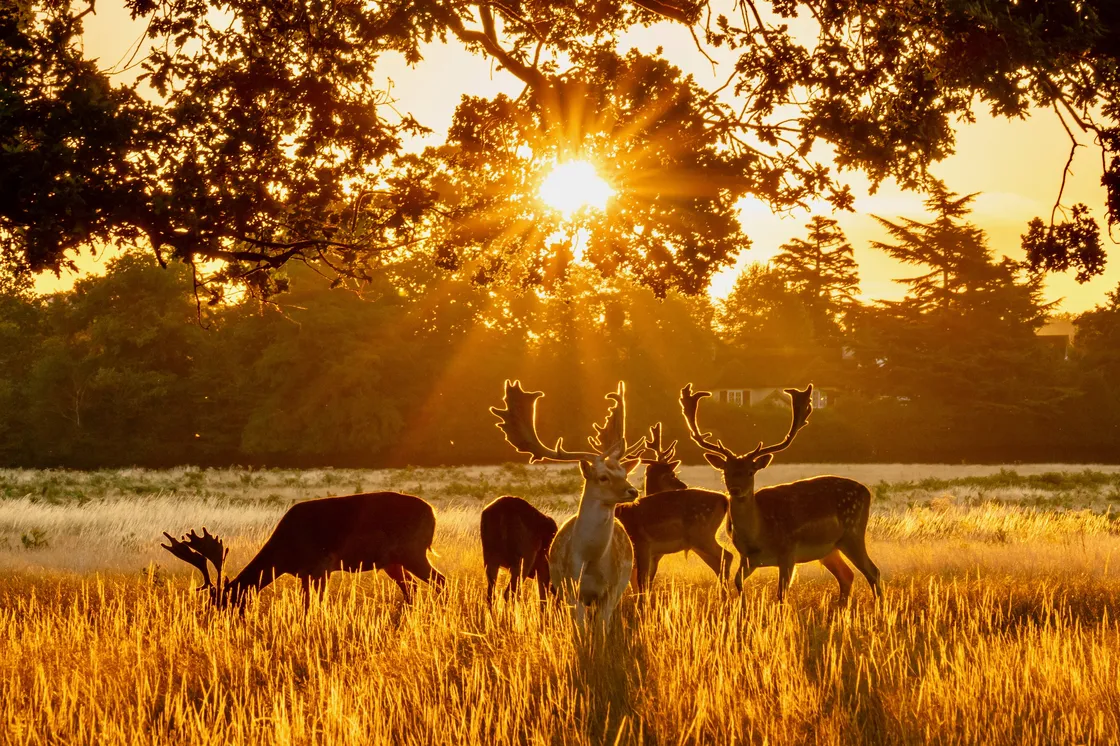
Herds of deer have roamed Bushy Park for centuries.
Christopher Wren's Chestnut Avenue
In the 1600s, Christopher Wren, architect of St Paul’s Cathedral, designed a grand approach through the park to Hampton Court Palace. Stretching for a mile and lined with horse chestnut and lime trees, Chestnut Avenue has become one of the park’s most recognisable features.
Chestnut Avenue is a fine example of baroque landscape architecture, a grand and stately style of garden design which was popular in England in the 1600s. The original layout, with its geometrical shapes and water features, is largely unchanged since Wren’s time.
At its centre is the Grade I-listed Diana Fountain, named after the Roman goddess Diana. The bronze statue at the top is actually of Arethusa, a nymph in Greek mythology.
Since the 1800s, ‘Chestnut Sunday’ celebrations have been held on the avenue every spring to celebrate the chestnut trees blossoming. Back then, it was a time for fashionable society to be seen.
Bushy Park in the Second World War
The Second World War (1939–1945) brought the most dramatic changes to the park when it was transformed into a top-secret US military base named Camp Griffiss.
In 1944, the Supreme Headquarters Allied Expeditionary Force, led by future US president General Dwight D Eisenhower, moved into the camp. In this bustling hub, the force meticulously planned the D-Day landings, in which Allied forces would invade Normandy, in France, and eventually liberate north-west Europe.
There’s a memorial on the very spot where Eisenhower’s office once stood. Another memorial nearby marks the site of Camp Griffiss, commemorating the United States Army Air Forces who lived and worked in the park during the war.
“The landscape owes much to the resilient yellow meadow ant”
A haven for rare species
Today, Bushy Park is home to an extraordinary array of species. The park’s acid grasslands, a rare habitat in London. The park’s ancient trees provide crucial habitats for insects and a significantly large mistletoe population.
The landscape owes much to the resilient yellow meadow ant. They’ve created a huge network of tunnels and overground mounds, which also provide a special habitat ideal for rare fungi and wildflowers. Some of these anthills are over 200 years old.
The park’s hidden waterways
The next time you’re enjoying a picnic on the grass, you might be sitting above an intricate, centuries-old water system.
The Longford River, created in 1639 by Charles I, still flows through the park today. This 14-mile engineering feat diverts water from the River Colne to Hampton Court Palace. The Upper Lodge Water Gardens, recently restored to their 17th-century glory, demonstrate the sophistication of Stuart-era hydraulic engineering.
Sports and recreation
In more modern times, the first formal hockey match was played in Bushy Park in 1871 by the Teddington Cricket Club. The players were experimenting with a new ‘stick’ game for winter, loosely based on football rules.
The Parkrun first took place here in 2004, which is a volunteer-led 5km run that now takes place across the world.
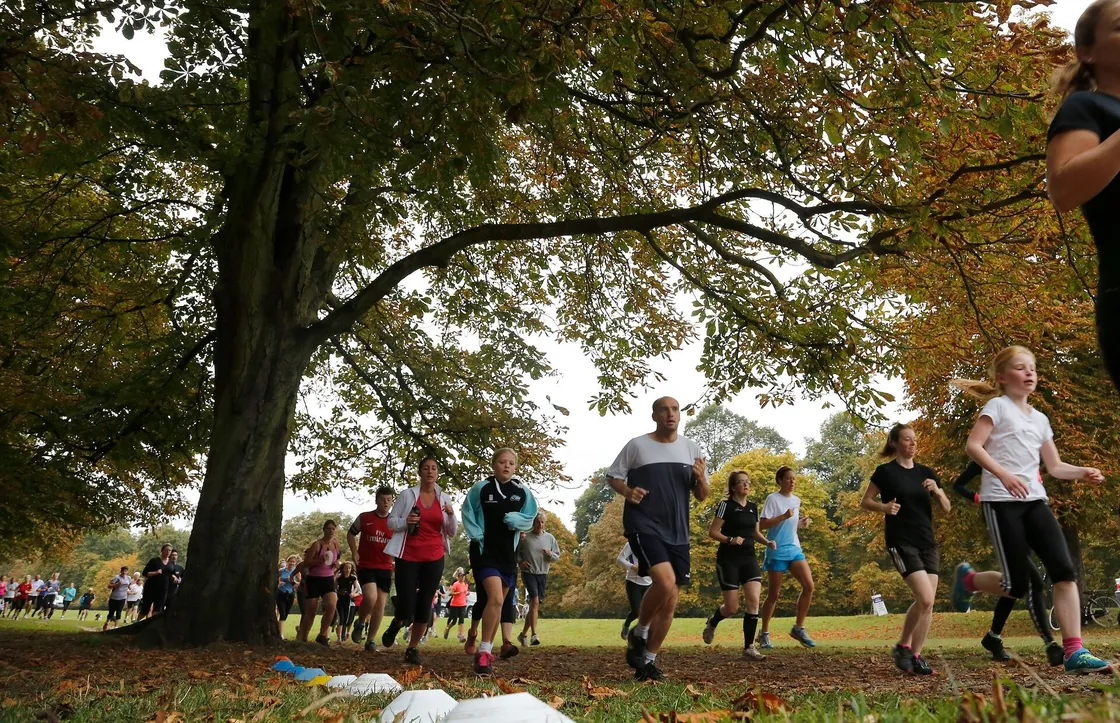
Parkrun in 2014.

